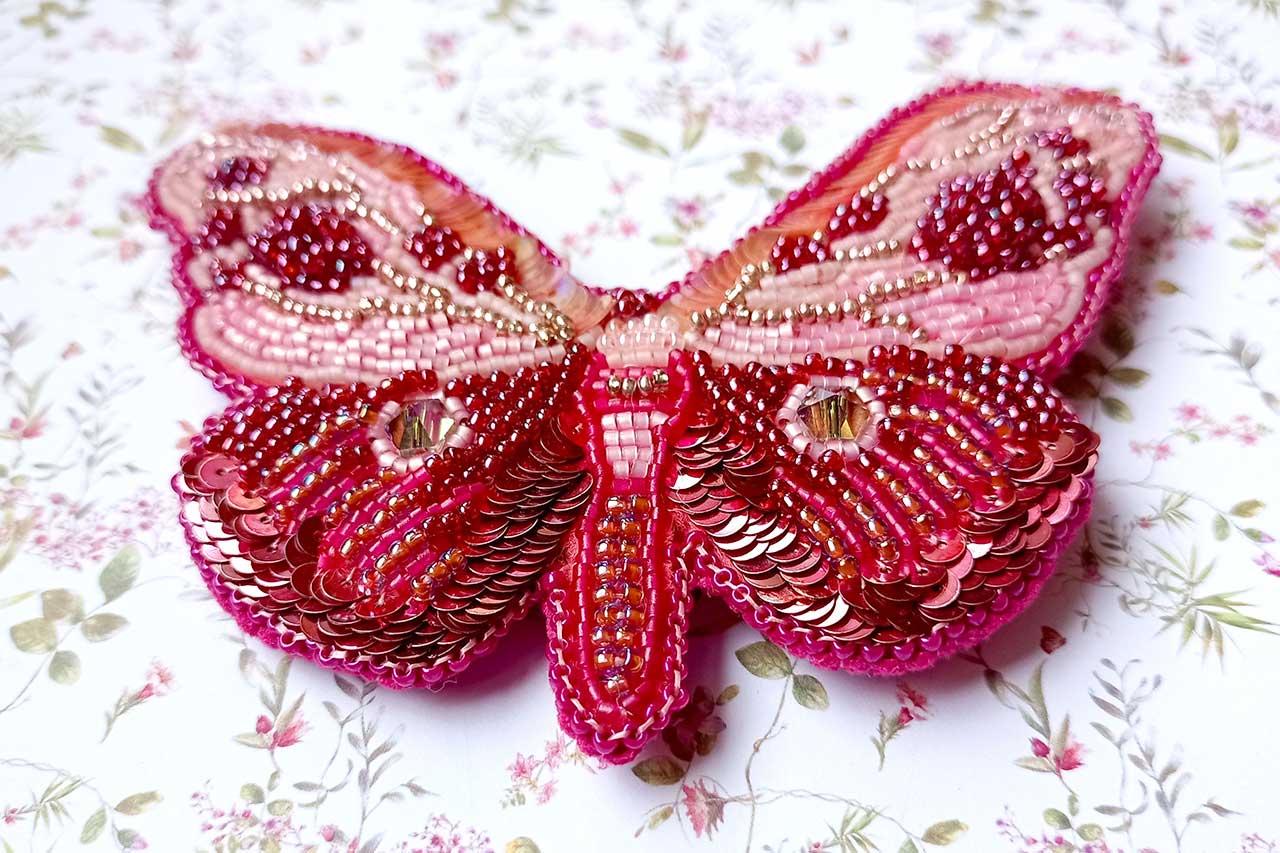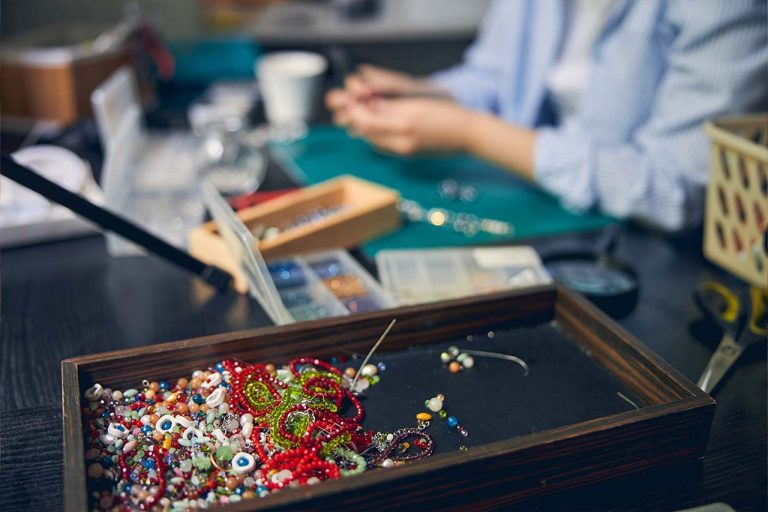Lunéville embroidery, what is it?
If you have ever browsed the Mythik Mystik site, you may have seen the term “Luneville embroidery” in the description of some of my embroidered jewellery. Before becoming an embroiderer, I didn’t know what that meant either.
If you are curious, here is a little article to enlighten you on the subject 🙂
Luneville, what is it?
Lunéville is a town in Lorraine. Long known for its lace and earthenware, it is mainly for its embroidery technique that this place is now known.
This technique is also called crochet embroidery, Haute Couture embroidery or beadwork.
Since when ?
Around 1800, during a visit to Lorraine, Joséphine de Beauharnais, wife of Napoleon, fell in admiration for the lace of the region. Thanks to the future Empress, the fashion for lace and embroidery is revived. At the time, embroidery was done with needles, then machines appeared and the mechanization of embroidery became tough competition for small workshops. Manual embroidery must diversify. Around 1865, beaded and sequined embroidery was created, identical to what is still done today. The development of this technique progresses until the Roaring Twenties then the crisis of 29 and the second world war undermine this Art. But thanks to the Parisian fashion houses, Lunéville embroidery was reborn after 1945, where it gained worldwide fame.
The technique
The embroidery of Lunéville is practiced on a fabric well stretched on an embroidery frame. Both hands work: one hand is placed above the loom and holds the hook (de Lunéville) and the other hand is below the loom and brings the beads or sequins strung on a thread towards the surface of the fabric. With the hook, the embroiderer (or the embroiderer, if there is one) creates a chain by trapping the beads and sequins in the loops.
The particularity of this technique is that we embroider on the back of the work, blind, without seeing the pattern take shape. In India, there is a somewhat similar technique, which also requires a hook, but where the work is done on the front of the loom. Very good embroiderers (mostly men) especially if it is gold embroidery. However, this technique is less precise when it comes to applying sequins.
Depending on the complexity of the patterns and the number of elements to be installed, the realization takes more or less time. A few square centimeters of embroidery can take several hours. Some designer dresses require hundreds of hours and many embroiderers just to make the embroidery! This explains their very high cost.
This technique is used in Haute Couture because it is faster than a needle to add elements such as pearls and sequins. The best embroiderers are able to embroider on all kinds of fabrics and even on leather!
This know-how requires dexterity, meticulousness and patience! And good eyes! Regularity and precision are essential for an impeccable result.
Supplies
Lunéville embroidery requires a certain material. The amount of the budget can quickly go up!
To begin with, the first essential element for embroidery is the embroidery frame. It consists of four long pieces of wood, placed on trestles, which will allow the fabric to be embroidered to be stretched to the maximum in order to facilitate the comings and goings of the hooks in the fabric and obtain an impeccable design.
For embroidery, the Lunéville crochet hook is also essential. It is thanks to him that we catch the thread and form the loops that will hold the pearls.
Then, various and varied threads are used. The most commonly used for stringing beads and sequins is gloving thread. It is a cotton thread, slightly glazed, which helps to lay the selected supplies in the chain stitch. Then, any thread whose texture, shine or color can inspire the embroiderer can be used. There are several sizes of hooks which adapt to the size of the yarn chosen 🙂
Finally come the pearls, sequins, sequins, cups, crystal shards, ribbons, feathers, in short, the elements to be placed, which are commonly called “supplies”. The possibilities are limitless. As proof, a few years ago, Chanel created clothes embroidered with concrete beads… Anything is possible!
Given the range of colors, materials, sizes and shapes of all these elements, the extent of imagination and creativity are the only limits to what is possible to create. This still promises beautiful unique pieces in perspective in the shop!
I am open to custom orders according to your desires. Do not hesitate to contact me via the site if you have any questions! 🙂
See you soon !
Audrey Wollbrett



